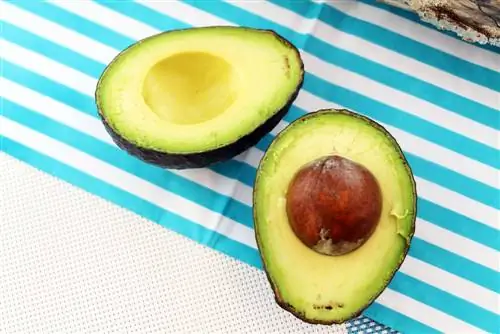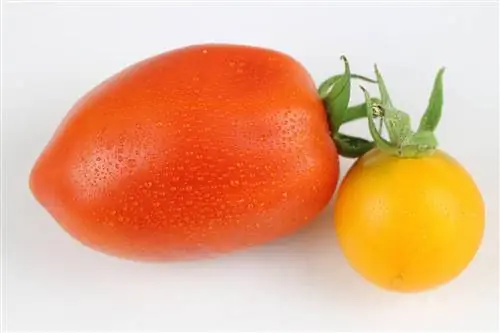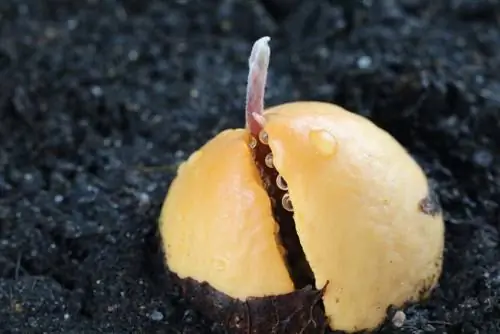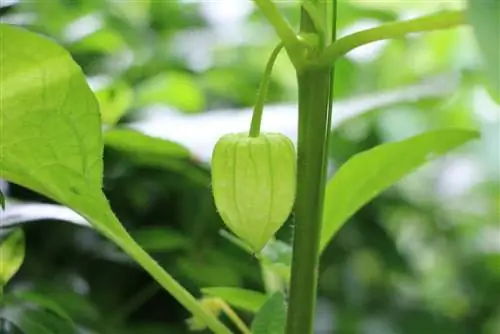- Author admin [email protected].
- Public 2023-12-17 03:39.
- Last modified 2025-06-01 06:48.
The avocado polarizes he alth-conscious minds like no other fruit. For decades, the high fat content forced even fans of the nutty, mild fruit flesh to give up with heavy hearts. The turnaround came with the realization that unsaturated fatty acids were beneficial for he alth. Today, avocado is one of the illustrious superfoods that should not be missing from any menu. This guide with a profile and nutritional information explains in detail what the he alth content of Persea americana is actually like.
Profile
- Name: Avocado (Persea americana)
- Origin: tropical rainforest in Central America
- Fruit of the evergreen avocado tree from the laurel family
- Common names: avocado pear, alligator pear, butter of the forest, butter fruit
- Size: 10-20 cm long and 7 to 9 cm wide
- Weight: average 500 to 900 g, rarely 200 to 450 g or 1.5 to 2.5 kg
- Color: medium to dark green or purple to black
- Shell: smooth, leathery or wrinkled
- Flesh: soft when ripe, greenish-yellow to golden-yellow, oxidizing to dark brown
- Taste: nutty-creamy, rarely sweet
- Core: golf ball size and poisonous
- Special feature: climacteric fruit (after-ripening)
- Use: Pure pulp as a butter substitute, sweetened puree (guacamole), seasoned as a dip, ingredient for cold soups and salads, filling for tortillas, chopped leaves as a seasoning or tea
From a botanical perspective, an avocado is a single-seeded berry that thrives on the evergreen avocado tree. This tree develops a shrub-like growth and reaches a height of up to 20 meters in its habitats.
Origin and growing areas
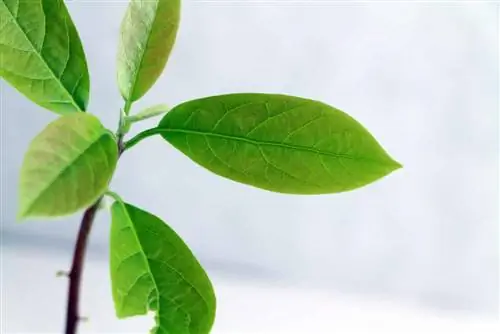
In its natural habitat, the rainforests of Central America, the avocado has been known as a useful plant for 10,000 years. It was one of the most important staple foods for the Aztecs. Today there are large growing areas around the globe that are not just limited to the tropical belt. The avocado tree is cultivated wherever a warm climate dominates, from South Africa to Israel and California to Australia and New Zealand. The fruit has thrived in the Mediterranean region since the beginning of the 20th century to meet increasing demand in Europe. There are now more than 400 varieties on the market worldwide, of which Avocado Fuerte and Avocado Hass are very popular in Europe.
Special feature: climacteric fruit
Their ability to ripen has made a significant contribution to the tropical avocado becoming a regular on menus in Europe. Avocado fruits do not naturally ripen on the tree. Rather, Persea americana sheds the berries when they are unripe so that they can ripen on the ground and provide numerous offspring. In plantations, the fruits are therefore picked as soon as they have reached a market size. During the refrigerated transport to Europe, the ripening process progresses slowly. On the store shelf, the consistency is still too hard to eat. On the warm windowsill, ideally in the immediate vicinity of apples, a butter fruit will ripen within a few days.
Core: golf ball size and poisonous
The large core inside is not suitable for consumption. The alkaloids it contains and the toxin persine can cause significant symptoms of poisoning in people if consumed intentionally or unintentionally in large quantities. For many animals, such as dogs, cats or budgies, it can be fatal if they eat an avocado pit. Enthusiastic home gardeners don't throw away the seeds, but simply grow their own avocado tree from them.
Tip:
Seedless avocados, called cocktail avocado or avocadito, are very popular. These are fruits that form from unfertilized flowers. These are comparatively small at 5 to 8 cm and have a very thin shell. Growers in California, South Africa and Israel have discovered the gap in the market and are supplying mini avocados to European stores.
Usage
The flesh of an avocado is prepared pure and uncooked for good reason. After just a short warming up, the nutty, creamy taste takes on an unpleasant, bitter aroma. That's why the butter fruit is often simply s alted and spooned out fresh. The fruit is also very popular pureed, sugared or s alted and can be enjoyed as a puree or spread. Resourceful avocado lovers have discovered that the mild taste is retained if the flesh is simply briefly baked with cheese.
Tip:
As the profile suggests, the golden-yellow flesh reacts with an unsightly discoloration when it comes into contact with air. You can easily prevent this shortcoming by immediately drizzling a freshly cut avocado fruit with lemon juice.
Nutritional values at a glance
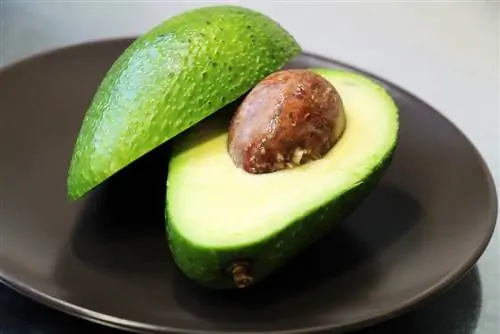
It is obvious that with more than 400 varieties, the nutritional values in Persea americana vary. The following nutritional information from the German Research Institute for Food Chemistry still provides everyday guidance:
(information per 100 grams of edible fruit content)
Components
- Water 66, 5 g
- Fat 23.5 g
- Fiber 6, 3 g
- Protein 1, 9 g
- Minerals 1, 4 g
- Carbohydrates 0.4 g
- Calorific value 909 kJ (221 kcal)
Important minerals
- Potassium 485 mg
- Phosphorus 45 mg
- Magnesium 30 mg
- Calcium 12 mg
- Iron 495 µg
Valuable vitamins
- Vitamin C 13 mg
- Vitamin E2 1300 µg
- Folic acid 30 µg
- Vitamin K 19 µg
Behind these nutritional values there are important functions for our organism that contribute significantly to maintaining he alth. Potassium removes excess water. Vitamins C and E strengthen the immune system. Iron supports the oxygen supply in the blood. Vitamin K makes a valuable contribution to the formation of blood clotting factors.
Phosphorus and calcium are the dream team among minerals because they ensure stable bones and strong teeth. Fiber keeps digestion going. The vitamin folic acid acts as a natural bulwark against one of the most common causes of death - stroke. Since the vitamin is only contained in small quantities in industrially processed foods, the avocado with its high folic acid content is just right.
Can so much fat be he althy? - but yes
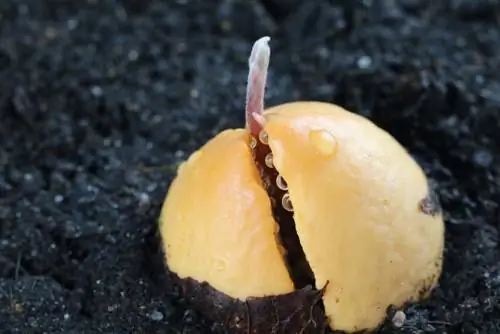
The fat content of 23.5 grams does increase the number of calories. Nevertheless, these are unsaturated fatty acids, the he althy counterparts of saturated fatty acids. Unsaturated fatty acids make many important vitamins available to our organism. In addition, they lower bad LDL cholesterol levels and raise good HDL cholesterol. In contrast, saturated fatty acids are responsible for a variety of diseases and obesity.
They lurk in fast food, fatty meat, fatty sausages and many other calorie bombs and make life difficult for our liver and bile. The German Society for Nutrition advocates covering 7 to 10 percent of the daily energy requirement with unsaturated fatty acids and ignoring saturated fatty acids.
Superfood with dark sides
From an ecological perspective, the increased cultivation of avocado trees is viewed critically. The focus is on high consumption of valuable resources, which is angering environmentalists worldwide. One kilogram of avocado fruits uses up to 1,000 liters of water. In Mexico alone, up to 4,000 hectares of forest are destroyed every year to make room for additional cultivation areas. Since the avocado was named a superfood, imports into Germany have increased explosively from 28,000 tons in 2010 to a whopping 58,500 tons in 2016.

